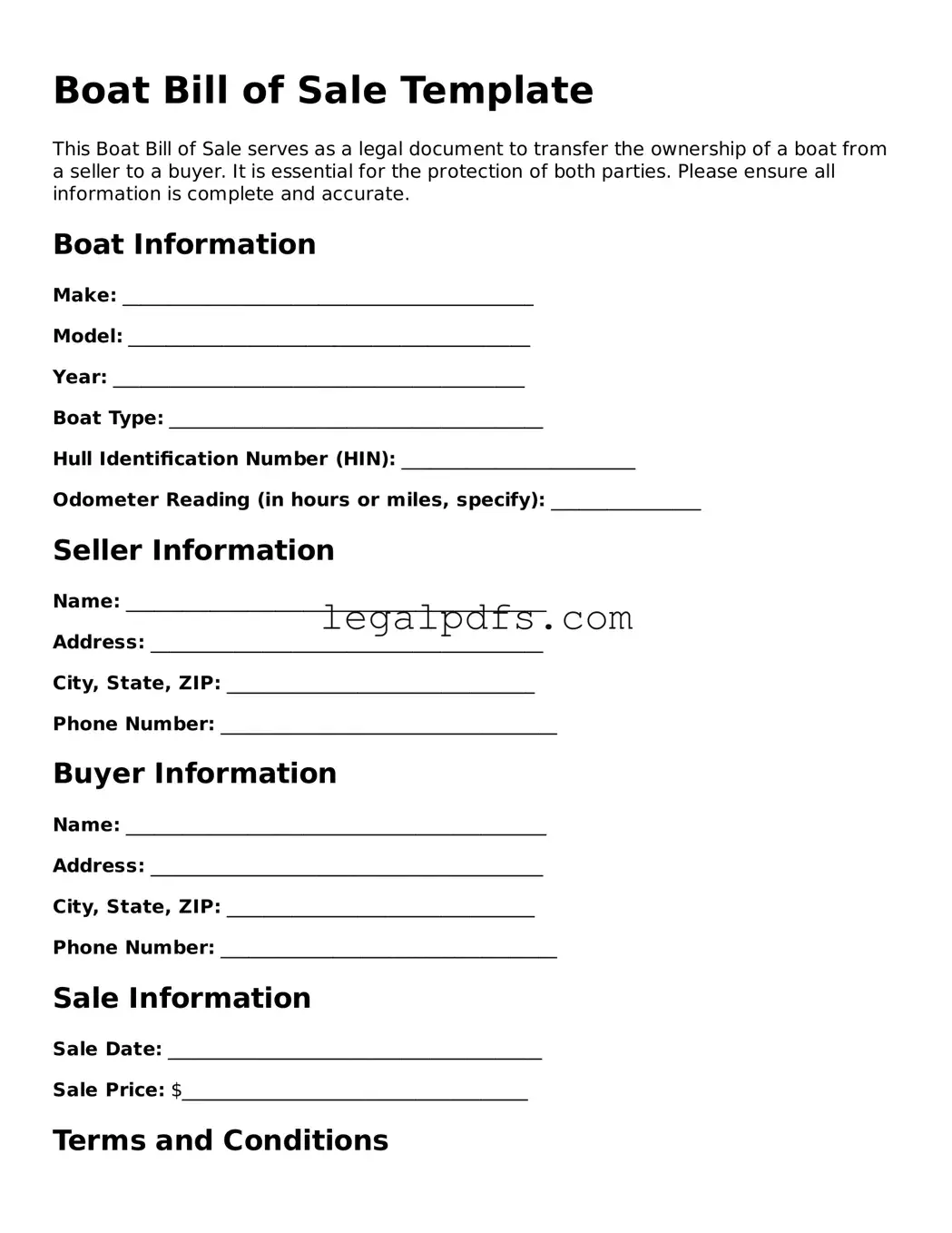What is a Boat Bill of Sale?
A Boat Bill of Sale is a document that records the transaction between a seller and a buyer of a boat. It serves as proof of purchase and documents the specifics of the boat being sold, including details such as the make, model, year, and identification number. This document also includes information on the sale price and conditions of the sale.
Why do I need a Boat Bill of Sale?
Having a Boat Bill of Sale is crucial for a few reasons. First, it officially documents the transfer of ownership from the seller to the buyer. This is important for registration, insurance, and potential tax purposes. Additionally, it can serve as legal protection in case any disputes arise regarding the boat's ownership or condition during the sale.
What information should be included in a Boat Bill of Sale?
A comprehensive Boat Bill of Sale should include the names and addresses of the buyer and seller, the sale date, the sale price, a detailed description of the boat (including make, model, year, color, and hull identification number), any included warranties or disclosures, and signatures of both parties involved.
Is a Boat Bill of Sale legally required?
The requirement for a Boat Bill of Sale varies by location. While not all jurisdictions require it for the sale of a boat, having one is generally considered best practice. It's advisable to check with your local boating authority or department of motor vehicles to understand the specific laws in your area.
How does a Boat Bill of Sale protect the buyer?
For buyers, a Boat Bill of Sale confirms the legality of the purchase and provides a record of the agreed-upon condition and price of the boat. This documentation can be vital for insurance claims, disputes, or if any legal issues arise concerning the boat's ownership.
How does a Boat Bill of Sale protect the seller?
Similarly, sellers benefit from a Boat Bill of Sale as it provides evidence that the transfer of ownership was agreed upon, potentially protecting them from future claims or disputes about the boat's condition or ownership. It’s a way of ensuring that the deal is finalized and cannot be unjustly contested.
Can a Boat Bill of Sale be used for any type of boat?
Yes, a Boat Bill of Sale can be used for different types of boats including sailboats, motorboats, yachts, and other watercraft. It's important, however, to accurately describe the boat in the bill to ensure it clearly represents the item being sold.
Do I need to notarize my Boat Bill of Sale?
Whether notarization is required for a Boat Bill of Sale depends on the jurisdiction. While not always mandatory, getting the document notarized can add an extra layer of legal protection for both parties involved. It’s wise to check with local authorities or a legal expert to determine if notarization is necessary in your area.
What should I do after receiving a Boat Bill of Sale?
Once you have a Boat Bill of Sale, the next steps include registering the boat in your name with the local boating authority or department of motor vehicles, if required. You should also keep a copy of the Bill of Sale for your records, securely stored with other important documents related to the boat.
